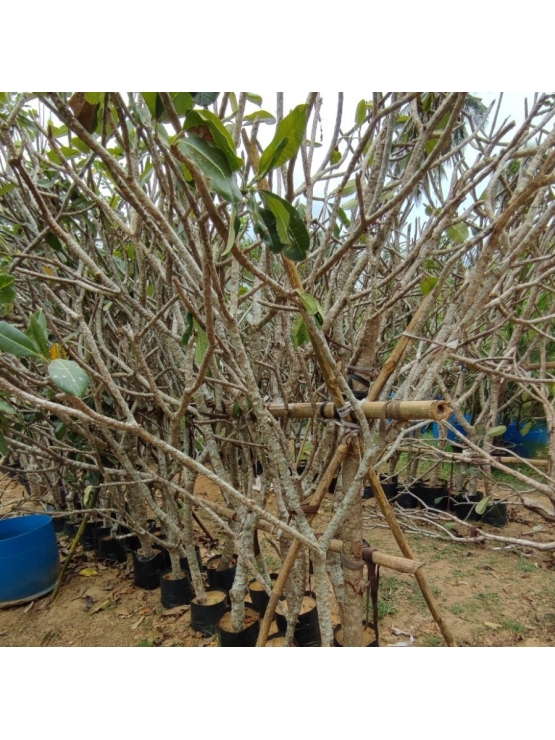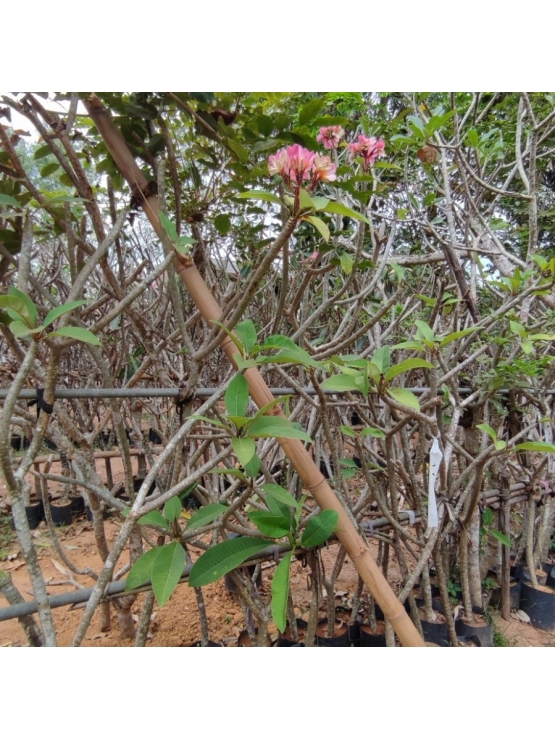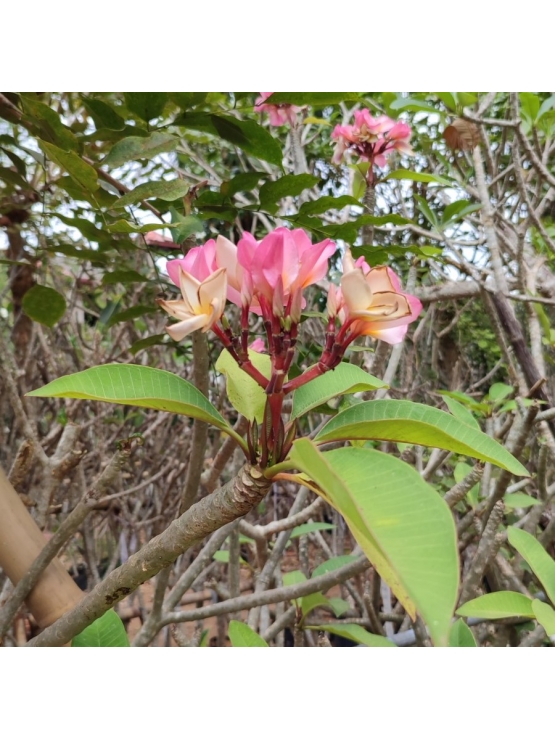PINK ARALIYA (Plumeria rubra)
PINK ARALIYA (Plumeria rubra)
- Brand: Biophilia Concept Shop
- Product Code: BPRB 21
- Availability: Out Of Stock
- Rs. 4,900.00
- Ex Tax: Rs. 4,900.00
Known as frangipani, is a genus of flowering plants in the family Apocynaceae. Most species are deciduous shrubs or small trees. The species variously are endemic to Mexico, Central America, and the Caribbean, and as far south as Brazil and north as Florida (United States), but are grown as cosmopolitan ornamentals in warm regions. Common names for plants in the genus vary widely according to region, variety, and whim, but frangipani or variations on that theme are the most common. Plumeria is also used as a common name, especially in horticultural circles.
Plumeria flowers are most fragrant at night to lure sphinx moths to pollinate them. The flowers yield no nectar, though, and simply trick their pollinators. The moths inadvertently pollinate them by transferring pollen from flower to flower in their fruitless search for nectar. Insects or human pollination can help create new varieties of plumeria. Plumeria trees from cross-pollinated seeds may show characteristics of the mother tree or their flowers might just have a totally new look.
Plumeria species may be propagated easily by cutting stem tips in spring. Cuttings are allowed to dry at the base before planting in well-drained soil. Cuttings are particularly susceptible to rot in moist soil. One optional method to root cuttings is applying rooting hormone to the clean fresh-cut end to enable callusing. Plumeria cuttings could also be propagated by grafting a cutting to an already rooted system.
Care
| Sun | Full Sun, Semi shade |
| Soil | Plant in slightly acidic or neutral soil (pH 6.6 - 7.5) with high organic matter content (eg., compost, manure, leaf mold) and good drainage. A soil with coarse texture, such as sandy soil or sandy loam, is ideal. The plant is tolerant of drought |
| Water | Should water the plant regularly, several times a week during the dry weather |
| Fertilizer | Trees should be fertilized in the landscape two to three times a year with a balanced fertilizer. Constant fertilization can raise acid levels too high, however. If this happens, add some Epsom salts to the soil to neutralize it |
Tags: BPRB 21





